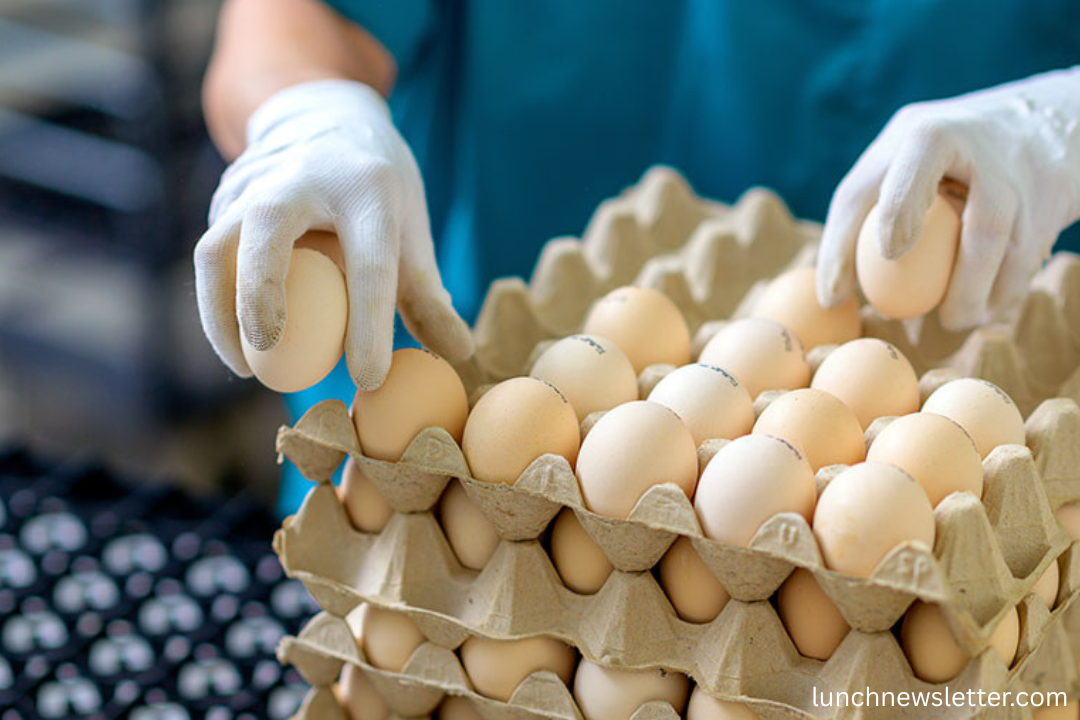Egg inflation has emerged as a pressing issue across global markets, sending shockwaves through grocery bills, farmer livelihoods, and food assistance programs. Consumers worldwide are noticing steep price increases in egg cartons, while producers are grappling with escalating costs and mental health challenges. Reductions in international food aid are compounding the issue, leaving millions at risk.
Egg inflation isn’t a localized issue. It reflects a complex network of supply chain disruptions, feed cost increases, disease outbreaks, and climate impacts. Understanding the deeper causes of egg inflation is essential to tackling the broader agricultural and humanitarian consequences.
What Is Egg Inflation and Why Is It Rising?
Egg inflation refers to the rapid increase in the cost of eggs over a short period. Unlike regular price fluctuations, egg inflation is driven by multiple compounding factors that include:
- Avian flu outbreaks that decimate poultry stocks
- High feed and grain prices impacting production costs
- Labor shortages on farms and in packaging facilities
- Energy price hikes affecting transportation and refrigeration
- Climate change effects, such as heatwaves disrupting hen laying patterns
As a result, egg inflation is becoming a critical economic indicator. In many countries, eggs are a dietary staple, so egg inflation significantly impacts food affordability and nutrition.
Impact of Egg Inflation on Consumers
Rising egg prices directly hit consumer wallets, especially in lower- and middle-income households. As egg inflation persists, families are forced to seek alternative protein sources or reduce overall nutritional intake. In regions where eggs are a primary protein, this trend has profound implications.
A report from global food organizations shows that egg inflation has led to a 35–70% increase in retail prices year over year in some markets. In countries like the U.S., U.K., India, and parts of Africa, eggs are increasingly classified as “luxury” food items, a stark contrast to their previously accessible status.
Egg Inflation Intensifies Stress Among Farmers
The consequences of egg inflation are not simply economic for egg producers. The pressure to meet rising demand while dealing with skyrocketing operational costs is pushing many farmers to the brink.
Mental health crises in the agricultural community have been escalating. Farmers coping with egg inflation face:
- Unstable market conditions
- Unpredictable income
- Loan defaults due to high production costs
- Public backlash when prices spike
Egg inflation, therefore, contributes not only to financial strain but also to emotional and psychological distress among poultry farmers.
Avian Flu – A Major Driver of Egg Inflation
The role of avian influenza in egg inflation cannot be overstated. Outbreaks have led to the culling of millions of hens globally, slashing egg supplies almost overnight. With supply severely limited and demand constant, egg inflation has surged.
Countries like the United States and Japan have reported some of the most significant avian flu outbreaks in history, resulting in both immediate shortages and long-term recovery issues. The culling process not only reduces the supply of eggs but also devastates farm revenue, increasing financial uncertainty.
Feed and Energy Costs Fueling Egg Inflation

Another major contributor to egg inflation is the increase in feed and energy prices. Poultry feed, made primarily from corn and soy, has experienced inflation due to supply chain disruptions, war-related trade imbalances, and climate-driven crop failures.
Energy costs—from fuel for transport to electricity for incubators and refrigeration—add further pressure. Egg inflation reflects a broader cost-of-living crisis, one that places heavy burdens on every node of the supply chain.
Global Aid Programs Cut Amid Rising Prices
As egg inflation drives up food prices, a parallel crisis is emerging in the world of global food assistance. Humanitarian organizations, facing budget constraints and rising food procurement costs, have had to cut back aid deliveries.
- The World Food Programme (WFP) is scaling down operations in parts of Africa and the Middle East
- National school lunch programs reducing protein-rich meals in developing countries
- Local food banks reporting record demand as egg donations dwindle
These aid cuts disproportionately affect vulnerable populations—especially children and older people—who depend on affordable protein. Egg inflation, when paired with reduced food assistance, results in a dangerous nutritional gap.
Egg Inflation and Nutrition Deficits in Developing Nations
Developing nations face the harshest impact of egg inflation. In many such regions, eggs are one of the most affordable and accessible protein sources. When egg prices rise, millions risk protein deficiency, malnutrition, and related health problems.
The economic shock of egg inflation may last longer in these countries due to slower recovery from avian flu, limited access to poultry vaccines, and fragile agricultural infrastructures. Governments are struggling to balance inflation control measures with support for both consumers and producers.
What Can Be Done to Combat Egg Inflation?
Efforts to manage egg inflation require a multi-pronged approach involving governments, producers, and international organizations. Key strategies include:
- Investment in biosecurity to prevent and control avian flu outbreaks
- Subsidies or financial relief for struggling egg farmers
- Diversification of protein sources to reduce market pressure
- Improved supply chain logistics to lower transportation and storage costs
- Food assistance reform to adjust for current price realities
Addressing the root causes of egg inflation can help stakeholders achieve long-term price stability and sustainable food systems.
Technology and Innovation – A Hopeful Outlook
Despite current challenges, technology offers potential solutions to the egg inflation crisis. Innovations such as automated poultry monitoring systems, climate-controlled housing, and lab-grown egg alternatives are being tested to stabilize supply and reduce dependency on traditional production methods.
Additionally, blockchain and AI are being used to optimize logistics and reduce food waste—factors that indirectly influence egg inflation.
Egg Inflation and the Road Ahead
Egg inflation is more than a passing economic trend. It represents a convergence of health, environmental, and social issues that affect consumers, farmers, and humanitarian systems worldwide.
Understanding the full scope of egg inflation helps prepare for future disruptions. As climate change continues and global markets become more interconnected, resilience in agricultural production and food policy will be key to minimizing the impact of future inflation waves.
Frequently Asked Questions (FAQ’s)
What is egg inflation, and why is it happening?
Egg inflation refers to the rapid and sustained rise in egg prices caused by factors like avian flu outbreaks, rising feed costs, labor shortages, and supply chain disruptions.
How does egg inflation affect everyday consumers?
Egg inflation increases grocery bills and makes a staple food item less affordable, especially for low- and middle-income households that rely on eggs as a primary protein source.
Why does egg inflation stress farmers?
While prices may rise, egg inflation often leads to inconsistent income for farmers due to higher production costs, disease outbreaks, and market instability, creating financial and emotional strain.
What role does avian flu play in egg inflation?
Avian flu outbreaks have forced mass culling of hens, leading to a sharp decline in egg supply. This supply drop is a major driver behind current egg inflation trends.
Are food aid programs affected by egg inflation?
Yes, global aid organizations are scaling back distributions because of egg inflation. Rising costs make it harder to supply vulnerable populations with protein-rich foods like eggs.
Is egg inflation a temporary issue or a long-term concern?
Egg inflation may persist as long as climate change, disease risks, and supply chain vulnerabilities remain unaddressed, making it a potential long-term challenge.
How are governments responding to egg inflation?
Governments are exploring measures like farmer subsidies, emergency import policies, and disease control programs to manage the effects of egg inflation on both producers and consumers.
Can technology help reduce the impact of egg inflation?
Yes, technologies such as automated poultry systems, lab-grown egg alternatives, and AI driven supply chains are being developed to mitigate the long term effects of egg inflation.
Conclusion
Egg inflation is not just about price tags. It’s about food security, farmer well-being, and equitable access to nutrition. As egg prices climb and stress levels rise among producers, it’s critical to implement targeted policies and innovations to stabilize the market. Consumers, governments, and global aid networks must collaborate to mitigate the effects of egg inflation. Without proactive measures, egg inflation could continue to strain household budgets, push more farmers into distress, and leave the world’s most vulnerable at greater nutritional risk.
